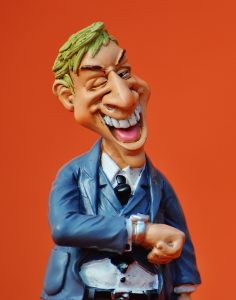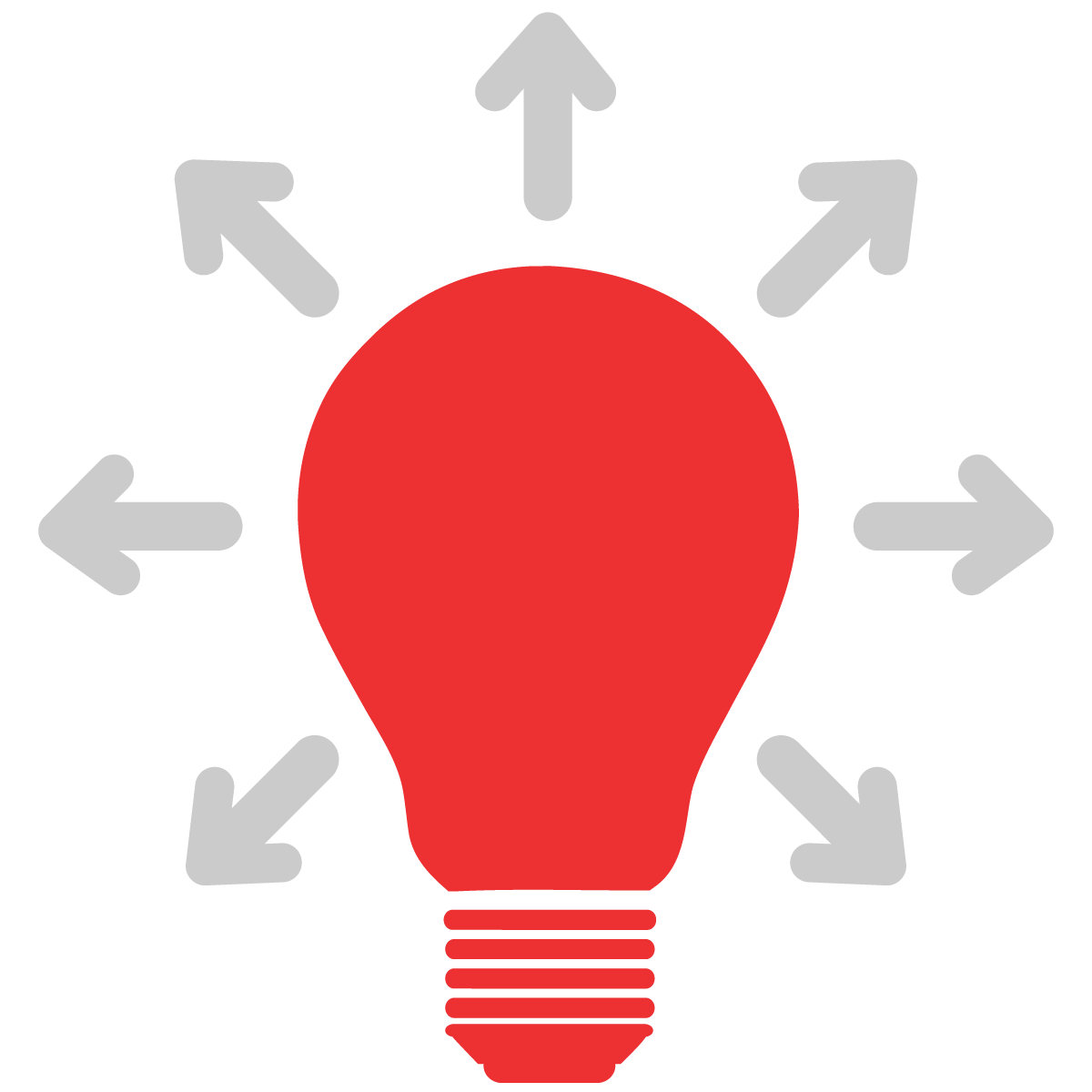One Good Thing About the Great Recession
Perhaps the most important lesson (if not the only positive one) businesses learned from the Great Recession that hit us all almost a decade ago, was how to reduce costs and operate leaner. One of the most common strategies employed to do that was to outsource non-core competencies.
Business owners and managers realized that instead of allocating resources (including mindshare) to things they are not particularly good at, they should focus on what they do best (i.e. make widgets), and hire someone else to perform the other functions.
This, in return, created entire industries of highly efficient outsource companies. In order to attract and keep clients, companies that specialize in providing outsourced services, had to quickly become more efficient and provide better results than in-house departments would.
Today, outsource service companies are a model of modern professionalism with great communication, and they utilize state-of-the-art technology to serve their clients remotely and transparently.
“Outsourcing” refers to hiring an outside entity to perform tasks essential for the business to operate, that previously or traditionally were performed by company employees. Forbes mentioned marketing, in a recent article, as one of “4 Business Processes Too Risky For Most Entrepreneurs To Handle Alone” (the others were payroll/accounting, legal, and administrative). We couldn’t agree more! Marketing IS a discipline that most companies can benefit from outsourcing.
A good outsource service company will allow its clients to customize what they buy. In other words, there is no ‘one size fits all’ service. Customization should apply to the specific services provided, and to the arrangement type. There are, essentially, two basic types of arrangements:
Supplemental: Hire an outsource firm to support and supplement the corresponding, but lean, in-house department. The supplementation can be purely based on needed ‘bodies’, or ‘hours’; but in most cases it is to bring in skills and expertise not available within the business.
Replacement: Hire an outsource firm to completely manage and execute a function independently, but with your supervision and ultimate control.
Marketing is one rapidly changing area where it pays to have a team on the cutting edge. Instead of losing money as you stumble around learning best practices, or stretching your resources too thin, leave it to seasoned professionals to get it right the first time, putting you ahead of the curve.
Here are the main reasons it makes sense to outsource your marketing:
- Your own Chief Marketing Officer and Marketing Department without the logistics, costs, or overhead of an in-house staff
- Instant “on” with immediate positive impact
- Cost-effectiveness and flexibility to scale services up or down
- Expertise, outside perspective, and capabilities not available in-house
- Always current with the latest in marketing best practices
- Services to fit your needs and budget
If you are curious about what outsource marketing department can do for you, call us or write to us – we will be happy to speak with you about it, without any obligation on your part.
Duke Merhavy, MBA, Ph.D.
President & Chief Marketing Officer
What Is Fractional CMO & Marketing?
Fractional CMO & Marketing is ‘Your Smart Marketing Formula’ when you need expert marketing leadership and marketing services to accelerate growth and improve profitability, but you’re not quite ready to hire a full-time Chief Marketing Officer or your own marketing department Our unique arrangement is the most efficient, innovative, and cost-effective formula for you. Click on the image on the right to watch a short video.
And Now a Word From Our Sponsor… The World’s First TV Commercial
By Polly Stroup, Editor and Copywriter 
One of the highlights of the Superbowl (besides the game itself), are the commercials! According to the American Marketing Association, a 30-second spot during the game costs five million dollars.
The tradition of commercials during our favorite sporting events goes way back. In fact, the world’s first FCC approved television commercial aired on July 1, 1941, before the beginning of a baseball game in New York between the Brooklyn Dodgers and Philadelphia Phillies.
The commercial, which aired on NBC’s WNBT-TV, lasted for 10 seconds. It was an advertisement for Bulova watches. It cost Bulova a grand total of $9. Five dollars went to station charges and four covered airtime charges.
The advertisement was both simple and ingenious. It featured a black and white silhouette of the continental United States, and had a clock face overlay with the words “Bulova” and “Watch Time”. The voiceover was done by NBC staff radio announcer Ray Forrest and said, “America runs on Bulova time.”
Not many enjoyed the luxury of a “silver screen” in their home, so the commercial was only seen by a few thousand people. That’s a far cry from today’s 120 million U.S. tv households! The last Superbowl had an estimated 103 million viewers.
It’s Showtime – Mind Your Manners! 8 Examples of Bad Behavior
By Polly Stroup, Editor and Copywriter
 Hours of work have been put into designing the perfect trade show exhibit and marketing materials with impact. One of the most important (and hard to control) elements is performance in the booth. How your staff greets and assists attendees will determine whether your show is a success. The definition of booth etiquette is the conduct, presentation, and performance of your booth staff. While your staff knows the product inside and out (after all, you’ve hired and trained the best!), behavior can easily fly “out the window” at a trade show.
Hours of work have been put into designing the perfect trade show exhibit and marketing materials with impact. One of the most important (and hard to control) elements is performance in the booth. How your staff greets and assists attendees will determine whether your show is a success. The definition of booth etiquette is the conduct, presentation, and performance of your booth staff. While your staff knows the product inside and out (after all, you’ve hired and trained the best!), behavior can easily fly “out the window” at a trade show.
From the moment you start training your show staff it’s vital to reinforce the fact: “the exhibit is a public stage, and you are the host.” Like good manners learned while growing up, show attendees should be treated with the warmth and graciousness expected of a host.
Examples of Bad Behavior and How to Nip it in the Bud:
1. Endless Chatter
Usually the best recruits for booth staff are the more outgoing and friendly members of the team. While this element helps draw attendees into an exhibit (who doesn’t like a friendly, approachable person?), it can also create chatty conversation among staff members. Face-to-face marketing is difficult when staffers have their backs turned to booth visitors. No one feels comfortable walking in on a conversation between acquaintances. One solution is to have a pre-show meeting allowing staff to catch up and exchange ideas.
2. Loose Lips Sink Ships
Presence at a trade show isn’t only on the trade show floor, it’s in the hotel lobby, at the airport, in the elevator, even at the pool. Chances are trade show attendees are everywhere you are! Imagine sitting at a restaurant near staffers decked out in company shirts trash talking their boss, their company, and the show. Their company booth will be crossed off your “need to see” list. Pre-show training is the place to make sure that anyone attending a show understands inappropriate chatter (and behavior) on and off the trade show floor is banned.
3. Put Down that Phone
Cellphones are notorious for inviting bad manners. We’ve seen it happen at the movie theater, ball games, even weddings. Playing with your phone in the booth is no different, it’s a lack of respect to your prospects and a guarantee of missed opportunities. On the other hand, when used properly, electronics are a great tool to immediately access important information asked for by a visitor. The key takeaway here is: on the exhibit floor a cellphone is a tool, not a toy!
4. Working 9 ~ 5
Shuttering the exhibit 20 minutes before closing is not only unprofessional, it’s a missed opportunity for potential clients. Exhibiting at a trade show isn’t cheap! Make sure team understands their job is to be on point from the minute they step into the booth until they are done for the day.
5. The All-Knowing Professor
You have a passionate staff member who knows the company and its products inside and out. This is a benefit, unless this dedicated host decides to educate an attendee about the entire history of the company in a half-hour long, yawn-worthy monologue. It’s vital to watch the cues of your guest and customize each conversation by asking questions that focus on what his or her needs are. Remember, if you are asking the questions, you are driving the conversation. Know when to be quiet and listen.
6. Sleeping on the Job
When attendees see trade show staff dozing in their chairs, they might feel embarrassed or offended. Their interest in your business takes a nosedive and you lose them as customers. This happens more often than you’d think due to a wide array of circumstances: long flight and different time zone (arrive early to combat jet lag), or, staying out late at the resort-style destination (talk to staffers about getting plenty of rest-they’re on the clock!).
7. What’s for Lunch?
Trade show food is something some of us dream about! Staffers need to eat and drink. However, eating a delectable chicken-salad sandwich at the exhibit is unprofessional and your brand image can suffer as a result. Setting a prearranged, rotating schedule of lunch breaks is one solution to this problem. If leaving the exhibit for lunch isn’t possible, lay out a few ground rules such as sticking to “low-odor” fare and taking small bites, with a quick “back-turn”, between guest visits.
8. Those Awkward Close-Ended Questions
Stay away from the close-ended question: “Do you have any questions?” Anyone asked this will most likely feel the pressure, answer with a simple “No” and bolt for the exit. Teach staff about the value of open-ended conversation starters: “What’s your favorite thing about the show so far?” or, “Tell me about what you do at your company?” maybe, “Have you ever used any of our products?” and finally, “If there was one thing you would change about our product what would it be?” to name a few. open-ended questions help discern if an attendee is a qualified prospect and gives insight for which direction to steer the conversation.
Take Advantage of Us
Give us a call at 888-412-2236 or click on the button below to request a complimentary Marketing Needs Assessment, or to ask us a question regarding your most pressing marketing or sales challenges.






